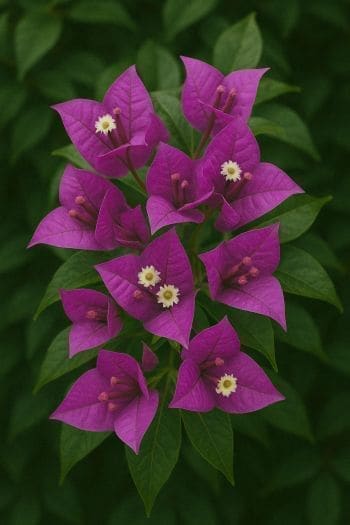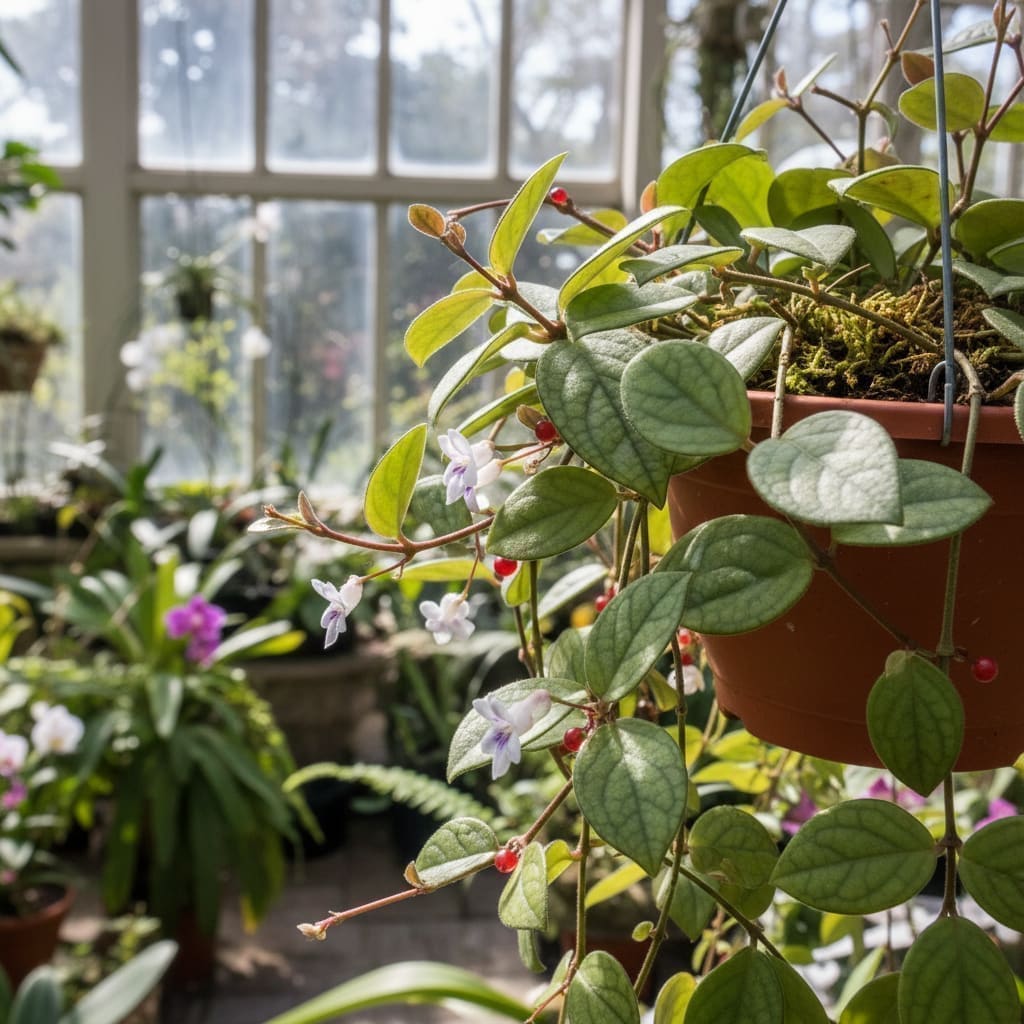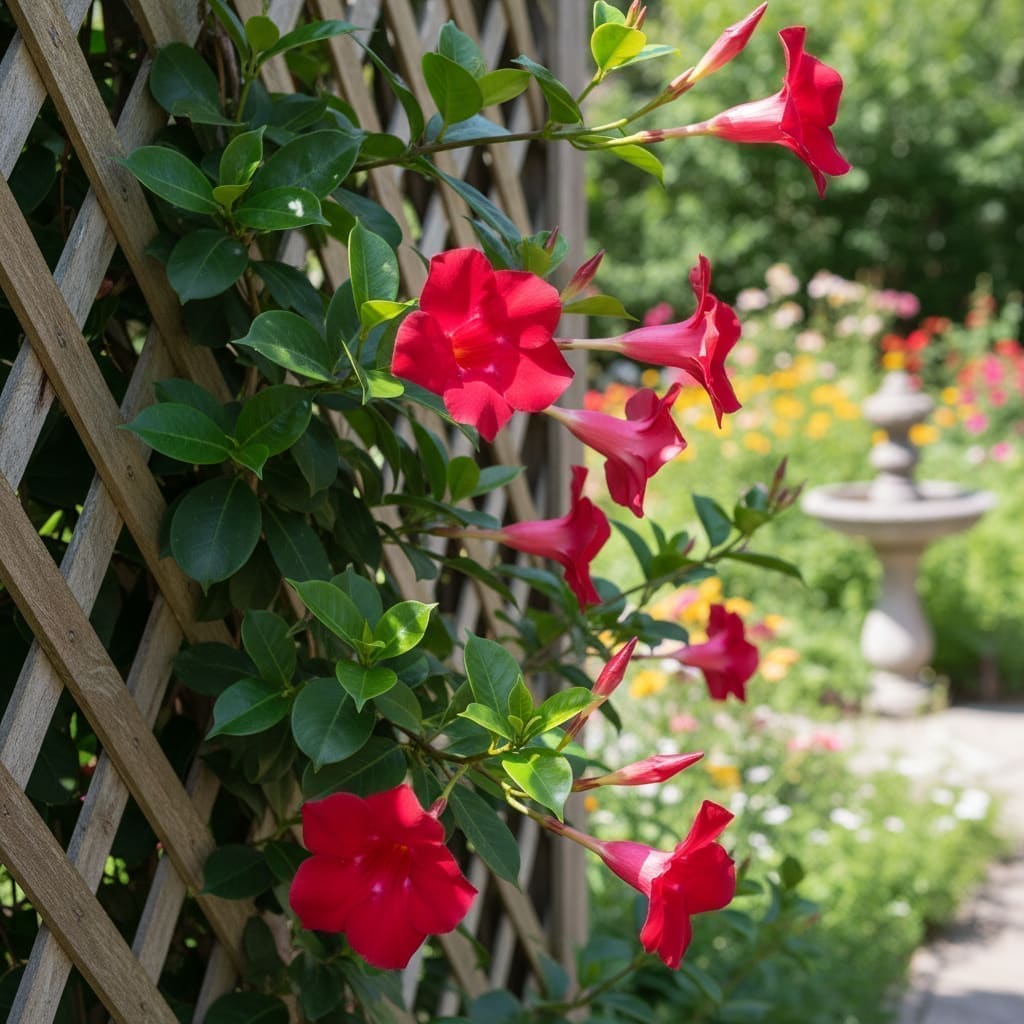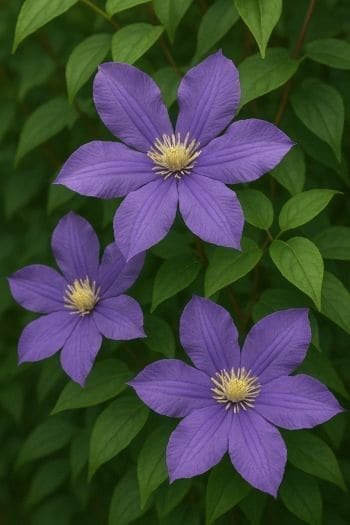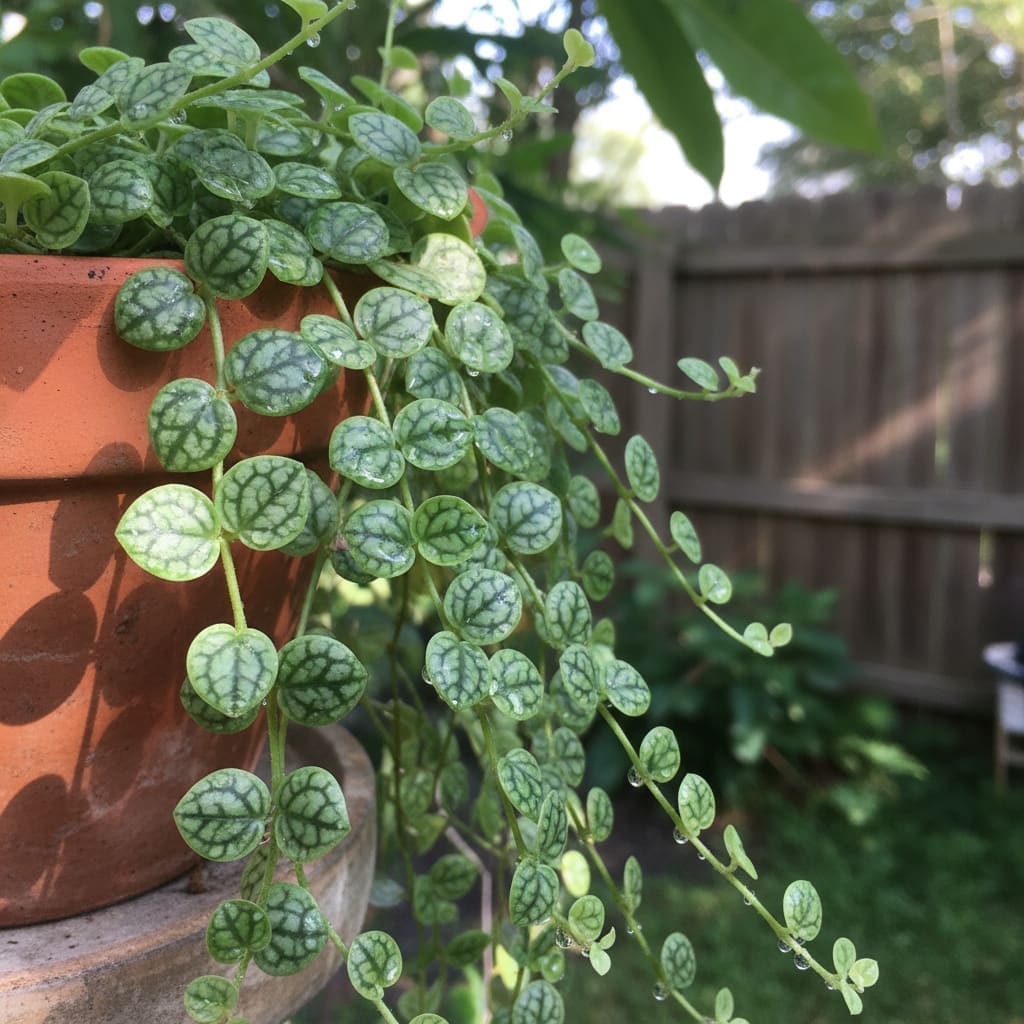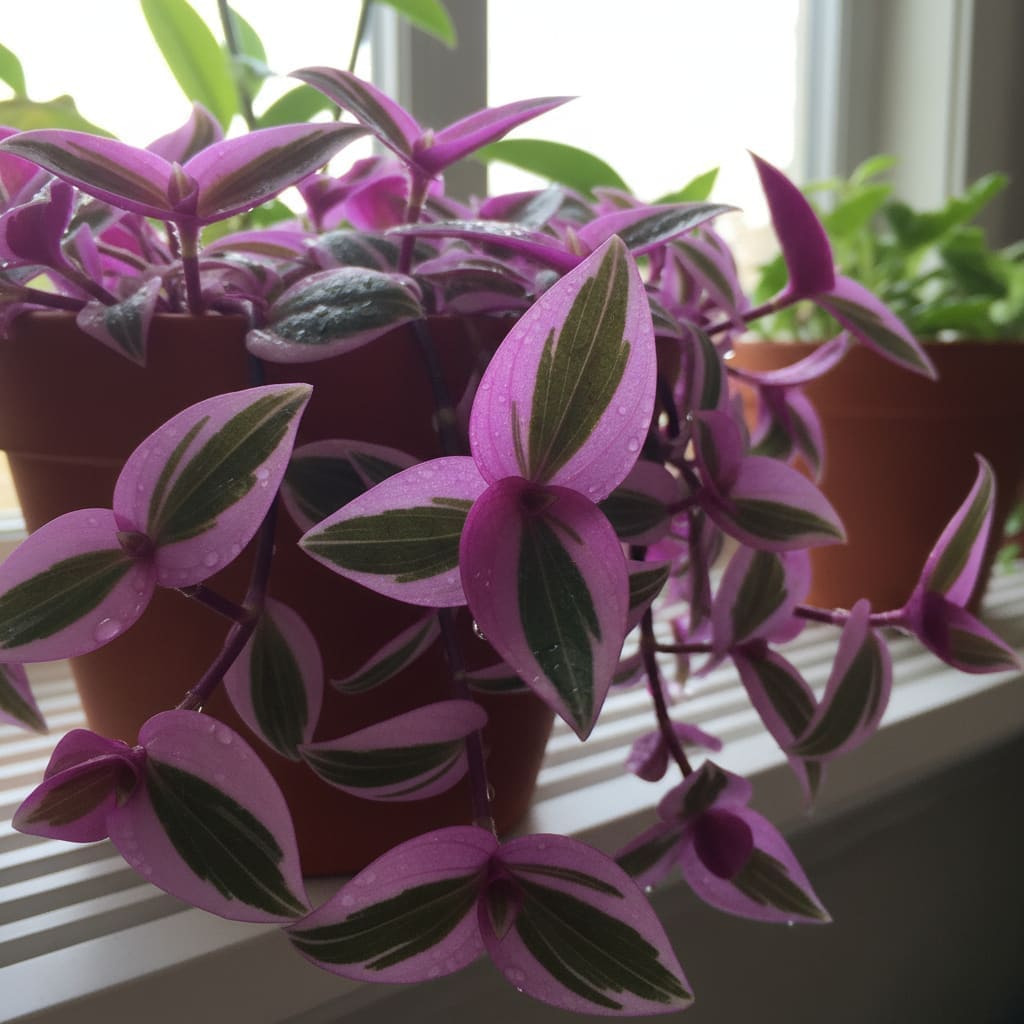Bougainvillea glabra Care & Growing Guide
Overview
Bougainvillea glabra, commonly known as paperflower, is a vibrant, woody vine native to Brazil. It is prized for its colorful bracts that surround small, tubular flowers, creating a striking display in gardens, patios, and indoor conservatories. The species name glabra means “bald” in Latin, referring to the smooth texture of its leaves compared to other bougainvillea species. This plant is well-suited to warm climates and can be grown indoors in bright conditions or outdoors in frost-free areas.
Identification & Growth Habit
Bougainvillea glabra is a fast-growing, evergreen climber or trailer with thorny stems. It can be trained to climb trellises, fences, or moss poles, or allowed to cascade from hanging baskets and containers. The true flowers are small and white or cream, surrounded by large, papery bracts in shades of magenta, purple, pink, or occasionally white. Leaves are ovate, smooth, and medium green, with a leathery texture. In ideal conditions, it can reach several meters in length outdoors, but can be pruned to remain compact indoors.
Light & Placement
Place Bougainvillea glabra in a location with bright, indirect sunlight for optimal growth. It can tolerate some direct sun, which may enhance bract coloration, but prolonged, intense midday sun indoors can cause leaf scorch. Outdoors, provide a position with morning sun and light afternoon shade in hot climates. Indoors, a south- or west-facing window with filtered light is ideal.
Watering & Humidity
- Water when the top inch (2.5 cm) of soil feels dry to the touch.
- Avoid overwatering, as Bougainvillea prefers slightly dry conditions and is susceptible to root rot.
- In winter, reduce watering frequency as growth slows.
- Maintain moderate humidity; occasional misting can help keep foliage vibrant, especially in dry indoor air.
Soil & Repotting
Use a well-draining soil mix, such as standard potting soil blended with coarse sand or perlite. Good drainage is essential to prevent waterlogging. Choose pots with drainage holes. Bougainvillea glabra prefers to be slightly root-bound, so repot only when necessary, typically every 2–3 years in spring, moving up just one pot size.
Fertilizing
Feed with a balanced liquid fertilizer every 4–6 weeks during the active growing season (spring and summer). Reduce or stop feeding in autumn and winter when growth slows. Over-fertilizing can lead to excessive leafy growth at the expense of bract production.
Pruning & Training
Prune after the main flowering flush to shape the plant and encourage branching. Remove dead, damaged, or tangled stems. To train Bougainvillea glabra:
- Trellis: Tie young stems loosely to supports, guiding them upward.
- Moss pole: Wrap stems gently and secure with soft ties.
- Cascading display: Allow stems to trail from hanging baskets or elevated planters.
Regular pruning helps maintain size and promotes more blooms.
Propagation
Stem Cutting Method
- Select healthy, semi-hardwood stems (not too green, not fully woody) about 4–6 inches (10–15 cm) long.
- Remove leaves from the lower half of the cutting.
- Optional: Dip the cut end in rooting hormone to encourage faster root development.
- Plant the cutting in a small pot filled with moist, well-draining soil or place in water until roots form.
- Maintain bright, indirect light and moderate humidity. Keep the soil lightly moist but not soggy.
- Once roots are established, transplant into a larger container or the garden.
Common Problems
Pests
- Aphids: Small, sap-sucking insects that cluster on new growth. Treat with insecticidal soap or a strong spray of water.
- Spider mites: Fine webbing and speckled leaves indicate infestation. Increase humidity and use miticides if needed.
- Mealybugs: White, cottony masses on stems and leaf nodes. Remove manually with a cotton swab dipped in alcohol.
Diseases
- Root rot: Caused by overwatering and poor drainage. Remove affected roots and repot in fresh, well-draining soil.
- Leaf spot: Fungal or bacterial spots may appear in overly damp conditions. Improve air circulation and avoid overhead watering.
Toxicity & Pet Safety
Bougainvillea glabra is considered toxic if ingested by pets or humans. The sap and thorns can also cause skin irritation. Keep out of reach of children and animals, and wear gloves when pruning or handling.
Styling & Decor Tips
- Train along an indoor trellis for a living wall effect.
- Use as a cascading focal point in a hanging basket.
- Pair with neutral pots to highlight the intense bract colors.
- Position near bright windows or sunrooms for maximum bloom potential.
Varieties & Cultivars
Bougainvillea glabra is often available in various bract colors, with popular selections including:
- 'Sanderiana': Vigorous growth with magenta bracts.
- 'Snow White': White bracts for a softer look.
- 'Crimson Lake': Deep red bracts with strong climbing habit.
Buying Tips & Maturity
When purchasing Bougainvillea glabra, look for plants with healthy, green foliage, no signs of pests, and sturdy stems. Bracts may not always be present outside peak blooming periods, so focus on overall plant health. Mature plants bloom more profusely and can be trained into desired shapes over time.
Seasonal Care
- Spring: Resume regular watering and feeding; prune to shape and encourage new growth.
- Summer: Maintain bright light and consistent watering; protect from extreme midday heat indoors.
- Autumn: Reduce feeding; prune lightly if needed.
- Winter: Water sparingly; keep in a bright, frost-free location.
FAQ
- How often does Bougainvillea glabra bloom? In warm, bright conditions, it can bloom several times a year, with peak displays in spring and summer.
- Can I grow it indoors year-round? Yes, if provided with bright light, good air circulation, and proper care.
- Why are the leaves turning yellow? Possible causes include overwatering, poor drainage, or insufficient light.
- Does it need a large pot? Not necessarily; Bougainvillea blooms better when slightly root-bound.
- Can I train it into a tree form? Yes, with regular pruning and staking, it can be shaped into a standard form.
Troubleshooting Scenarios
- No blooms despite healthy foliage: Likely due to excess nitrogen or insufficient light. Switch to a low-nitrogen, high-phosphorus fertilizer and increase sun exposure.
- Sudden leaf drop: Can occur after moving the plant or due to abrupt temperature changes. Keep conditions stable and avoid drafts.
- Leggy growth: Indicates inadequate light or lack of pruning. Relocate to a brighter spot and pinch back tips to encourage branching.
Advanced Pruning & Training Techniques
For exhibition-quality displays, consider espalier training against a wall, weaving stems horizontally to maximize flowering nodes. In container specimens, selective thinning of interior stems improves airflow and reduces fungal risk. For bonsai-style forms, prune roots lightly during repotting and maintain a compact canopy through regular tip pinching.
Pest & Disease Quick-Reference
- Whiteflies: Tiny white insects that fly up when disturbed; control with yellow sticky traps and insecticidal soap.
- Scale insects: Brown or black bumps on stems; scrape off gently and treat with horticultural oil.
- Powdery mildew: White, powdery coating on leaves; improve ventilation and apply fungicide if severe.
Companion Plant Suggestions
Pair Bougainvillea glabra with sun-loving, drought-tolerant plants such as lantana, plumbago, or rosemary for a vibrant, low-maintenance display. In mixed containers, use trailing succulents like sedum to complement the bracts without competing for resources.
Do & Don't List
- Do: Use gloves when handling to avoid thorn scratches.
- Do: Rotate potted plants regularly for even growth.
- Don't: Overpot; this can delay blooming.
- Don't: Leave in soggy soil; root health will decline rapidly.
